Black wattle, Ear Pod Wattle
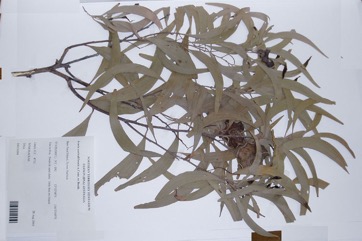
They are tropical plants. Often trees grow in monsoon vine forest. In tropical Queensland it grows from sea level to 500 m altitude. They are often along the banks of freshwater streams. It prefers open sunny positions. It can survive drought. It is damaged by frost. It can grow on poor soils. It suits hardiness zones 10-12.
Also known as:
Acacia sleuk touch, Akasia kuning, Bunga siam, Earleaf wattle, Kasia, Kathin-narong, Keo bong vang, Keo la-tram, Kratin-narong, Northern Black wattle, Pohon akasia, Pohon akasia hitam, Unar
Synonyms
- Racosperma auriculiforme (Benth.) Pedley
- Acacia auriculaeformis
- Acacia moniliformis Griseb.
Edible Portion
- Gum, Seeds - oil
Where does Black wattle grow?
Found in: Africa, Andamans, Argentina, Asia, Australia, Cambodia, Central America, China, East Africa, East Timor, Fiji, India, Indochina, Indonesia, Laos, Malaysia, Mauritius, Myanmar, Pacific, Pakistan, Panama, Papua New Guinea, PNG, Philippines, Reunion, SE Asia, Tanzania, Thailand, Timor-Leste, United States, Vietnam
Notes: There are about 1,350 Acacia species. Over 1,000 occur in Australia. This one can become invasive. It has anticancer properties. Also as Mimosaceae.
Status: The gum is eaten in Australia, but it is not known if this is used in PNG.
Growing Black wattle, Ear Pod Wattle
Cultivation: It is grown from seed. The seed needs treatment to help it grow. Normally this is by putting the seeds in very hot water and letting the water cool down overnight then planting the seeds immediately. It is a fast growing plant.
Production: It is fast growing. It is brittle in wind storms. Flowering is May to July with pods in August to October.
Nutrition Info
per 100g edible portion| Edible Part | Energy (kcal) | Protein (g) | Iron (mg) | Vitamin A (ug) | Vitamin c (mg) | Zinc (mg) | % Water |
|---|---|---|---|---|---|---|---|
| Seeds - oil | - | - | - | - | - | - | |
| Gum | - | - | - | - | - | - |
Black wattle, Ear Pod Wattle Photos

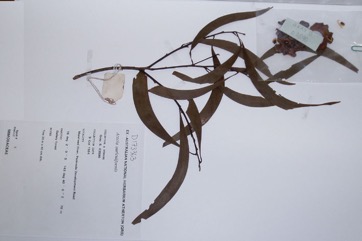
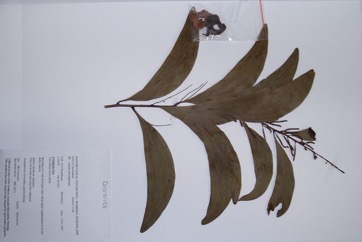
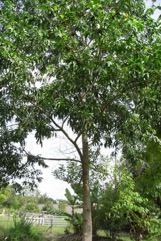
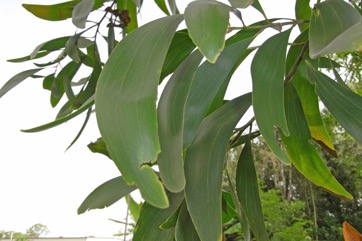
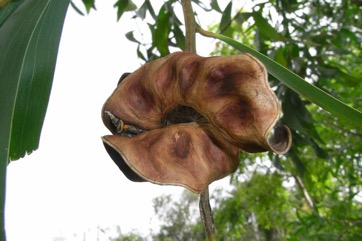
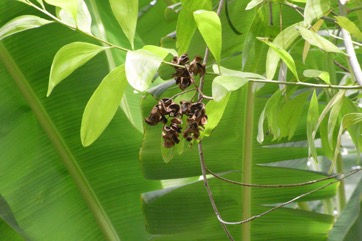
References
Ambasta S.P. (Ed.), 2000, The Useful Plants of India. CSIR India. p 4
Barwick, M., 2004, Tropical and Subtropical Trees. A Worldwide Encyclopedic Guide. Thames and Hudson p 2
Bodkin, F., 1991, Encyclopedia Botanica. Cornstalk publishing, p 9
Borrell, O.W., 1989, An Annotated Checklist of the Flora of Kairiru Island, New Guinea. Marcellin College, Victoria Australia. p 94
Brock, J., 1993, Native Plants of Northern Australia, Reed. p 57
Cooper, W. and Cooper, W., 2004, Fruits of the Australian Tropical Rainforest. Nokomis Editions, Victoria, Australia. p 301
Doran, J.C., & Turnbull, J.W. (Eds), 1997, Australian Trees and Shrubs: species for land rehabilitation and farm plantings in the tropics. ACIAR Monograph No 24. p 112
Dunlop, C.R., Leach, G.J. & Cowie, I.D., 1995, Flora of the Darwin Region. Vol 2. Northern Territory Botanical Bulletin No 20. p 6
Elliot, W.R., & Jones, D.L., 1982, Encyclopedia of Australian Plants suitable for cultivation. Vol 2. Lothian. p 19
Engel, D.H., & Phummai, S., 2000, A Field Guide to Tropical Plants of Asia. Timber Press. p 54
Etherington, K., & Imwold, D., (Eds), 2001, Botanica's Trees & Shrubs. The illustrated A-Z of over 8500 trees and shrubs. Random House, Australia. p 49
Flora of Pakistan. www.eFloras.org
Friday, J. B., 2005, Forestry and Agroforestry Trees of East Timor. http://www.ctahr.hawaii.edu/forestry/data/Timor/Timor trees.html
Hearne, D.A., & Rance, S.J., 1975, Trees for Darwin and Northern Australia. AGPS, Canberra p 9, Pl.1
Kintzios, S. E., 2006, Terrestrial Plant-Derived Anticancer Agents and Plant Species Used in Anticancer research. Critical Reviews in Plant Sciences. 25: pp 79-113
Krishen P., 2006, Trees of Delhi, A Field Guide. DK Books. p 82
Latham, P. & Mbuta, A. K., 2017, Plants of Kongo Central Province, Democratic Republic of Congo. 3rd ed p 12
Lazarides, M. & Hince, B., 1993, Handbook of Economic Plants of Australia, CSIRO. p 2
Levitt, D., 1981, Plants and people. Aboriginal uses of plants on Groote Eylandt. Australian Institute of Aboriginal Studies, Canberra. p 100
Llamas, K.A., 2003, Tropical Flowering Plants. Timber Press. p 210
London J. Bot. 1:377. 1842
Marinelli, J. (Ed), 2004, Plant. DK. p 442
Mbuya, L.P., Msanga, H.P., Ruffo, C.K., Birnie, A & Tengnas, B., 1994, Useful Trees and Shrubs for Tanzania. Regional Soil Conservation Unit. Technical Handbook No 6. p 48
McMakin, P.D., 2000, Flowering Plants of Thailand. A Field Guide. White Lotus. p 18
Pham-Hoang Ho, 1999, An Illustrated Flora of Vietnam. Nha Xuat Ban Tre. p 820
Swaminathan, M.S., and Kochnar, S.L., 2007, An Atlas of Major Flowering Trees in India. Macmillan. p 132
Verdcourt, B., 1979, Manual of New Guinea Legumes. Botany Bulletin No 11, Division of Botany, Lae, Papua New Guinea. p 163
Wightman, Glenn et al. 1992. Mudburra Ethnobotany: Aboriginal Plant Use from Kulumindini (Elliott) Northern Australia. Northern Territory Botanical Bulletin No 14. Parks and Wildlife Commission of the Northern Territory. p 5, 7.
Wightman, G. M. & Andrews, M.R., 1989, Plants of Northern Territory Monsoon Vine Forests (Vol 1). Conservation Commission of Northern Territory. p 14
World Checklist of Useful Plant Species 2020. Royal Botanic Gardens, Kew